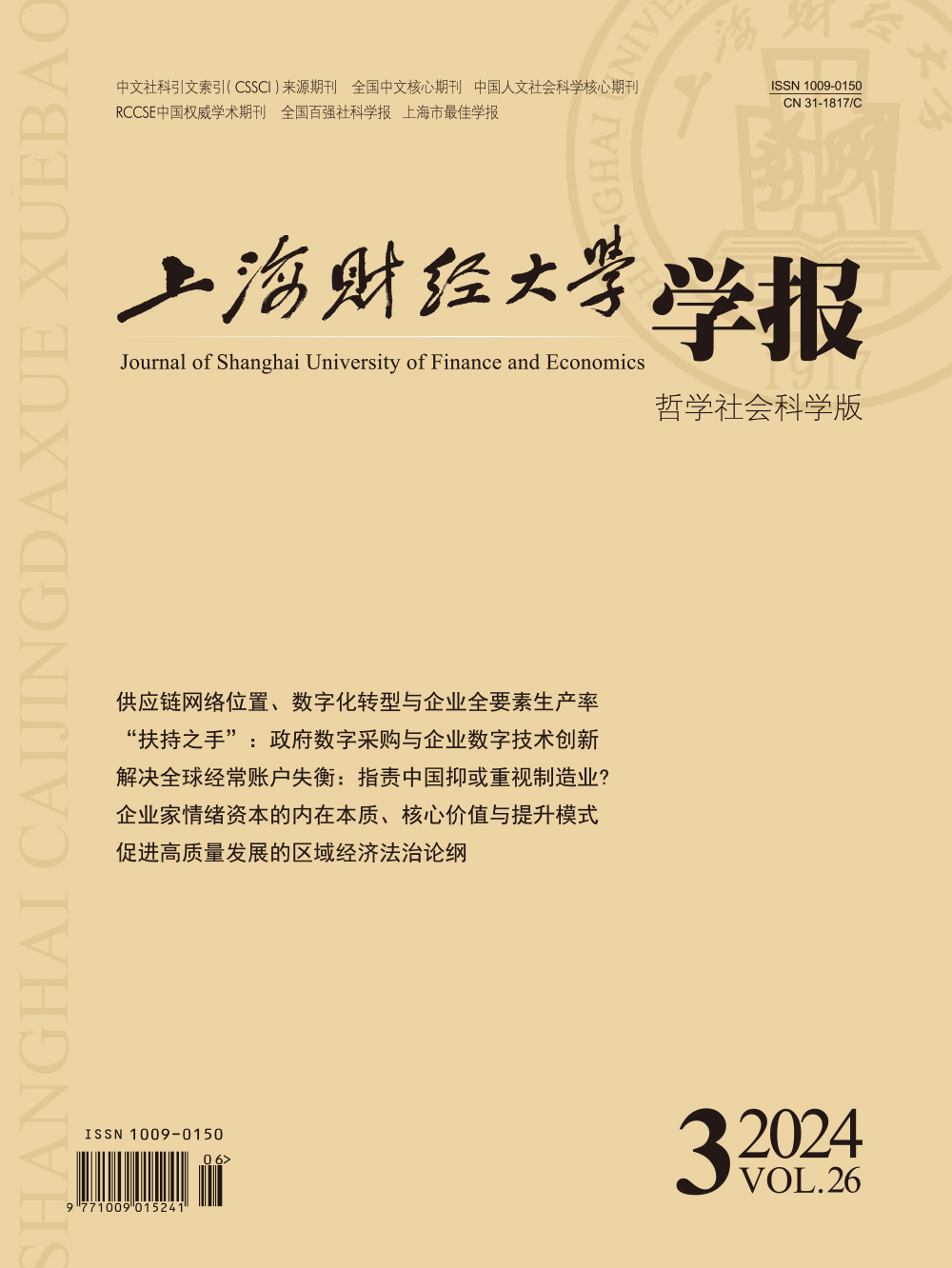解决人力资本结构高级化导致的经常账户失衡问题是国际经济高质量发展的关键。文章在构建经常账户—人力资本结构敏感度框架的基础上,以2007—2021年全球61个国家或地区14个制造业部门数据为研究样本,系统考察了国家制造业重视程度对人力资本结构高级化导致的经常账户失衡的影响。研究发现,国家重视制造业能够解决人力资本结构高级化导致的经常账户失衡问题;国家重视制造业可以提高制造业的全球竞争力和推动金融更好地服务实体经济,从而有效抑制人力资本结构高级化导致的经常账户失衡;对创新能力较强、制度质量较高、劳动力比较充裕和人力资本质量较高的国家以及劳动密集型和低技术水平行业而言,前述效果更加明显。可见,国家在重视制造业以解决人力资本结构高级化导致的经常账户失衡后,可以有效扩大就业规模和提升经济增长水平。
解决全球经常账户失衡:指责中国抑或重视制造业?——基于人力资本结构高级化的视角
摘要
参考文献
1 蔡贵龙, 柳建华, 马新啸. 非国有股东治理与国企高管薪酬激励[J]. 管理世界, 2018, (5). DOI:10.3969/j.issn.1002-5502.2018.05.017
13 刘毓芸, 程宇玮. 重点产业政策与人才需求——来自企业招聘面试的微观证据[J]. 管理世界, 2020, (6). DOI:10.3969/j.issn.1002-5502.2020.06.007
18 佟家栋, 云蔚, 彭支伟. 新型国际分工、国际收支失衡与金融创新[J]. 南开经济研究, 2011, (3). DOI:10.3969/j.issn.1001-4691.2011.03.006
29 Aghion P, Cai J, Dewatripont M, et al. Industrial policy and competition[J]. American Economic Journal: Macroeconomics,2015,7(4):1–32.
30 Bernanke B. The global saving glut and the U. S. current account deficit[R]. Paper No. 77, 2005: 16.
31 Bernanke B. Global imbalances: Recent developments and prospects[R]. Paper No. 317, 2007: 99.
32 Bombardini M, Gallipoli G, Pupato G. Skill dispersion and trade flows[J]. American Economic Review,2012,102(5):2327–2348. DOI:10.1257/aer.102.5.2327
33 Caballero R J, Farhi E, Gourinchas P O. An equilibrium model of “global imbalances” and low interest rates[J]. American Economic Review,2008,98(1):358–393. DOI:10.1257/aer.98.1.358
34 Criscuolo C, Martin R, Overman H G, et al. Some causal effects of an industrial policy[J]. American Economic Review,2019,109(1):48–85. DOI:10.1257/aer.20160034
35 Du J L, Fang H S, Jin X R. The “growth-first strategy” and the imbalance between consumption and investment in China[J]. China Economic Review,2014,31:441–458. DOI:10.1016/j.chieco.2014.09.002
36 Gruhle T, Harms P. Producer services and the current account[J]. Journal of International Money and Finance,2022,121:102514. DOI:10.1016/j.jimonfin.2021.102514
37 Hakeem M, Oluitan O. Financial development and human capital in South Africa: A time-series approach[J]. Research in Applied Economics,2012,4(3):18–38.
38 Henriksen E R. A demographic explanation of US and Japanese current account behavior[R]. 2002: 1-30.
39 Koopman R, Wang Z, Wei S J. Tracing value-added and double counting in gross exports[J]. American Economic Review,2014,104(2):459–494. DOI:10.1257/aer.104.2.459
40 Rajan R G, Zingales L. Financial dependence and growth[J]. The American Economic Review,1998,88(3):559–586.
41 Rodrik D. Coordination failures and government policy: A model with applications to East Asia and Eastern Europe[J]. Journal of International Economics,1996,40(1-2):1–22. DOI:10.1016/0022-1996(95)01386-5
42 Wang Z, Wei S J, Yu X D, et al. Measures of participation in global value chains and global business cycles[R]. NBER Working Paper No. 23222, 2017a.
43 Wang Z, Wei S J, Yu X D, et al. Characterizing global value chains: Production length and upstreamness[R]. NBER Working Paper No. 23261, 2017b.
引用本文
赵艳平, 梁正一, 马新啸. 解决全球经常账户失衡:指责中国抑或重视制造业?——基于人力资本结构高级化的视角[J]. 上海财经大学学报, 2024, 26(3): 65-78.
导出参考文献,格式为:





 4201
4201  6274
6274

